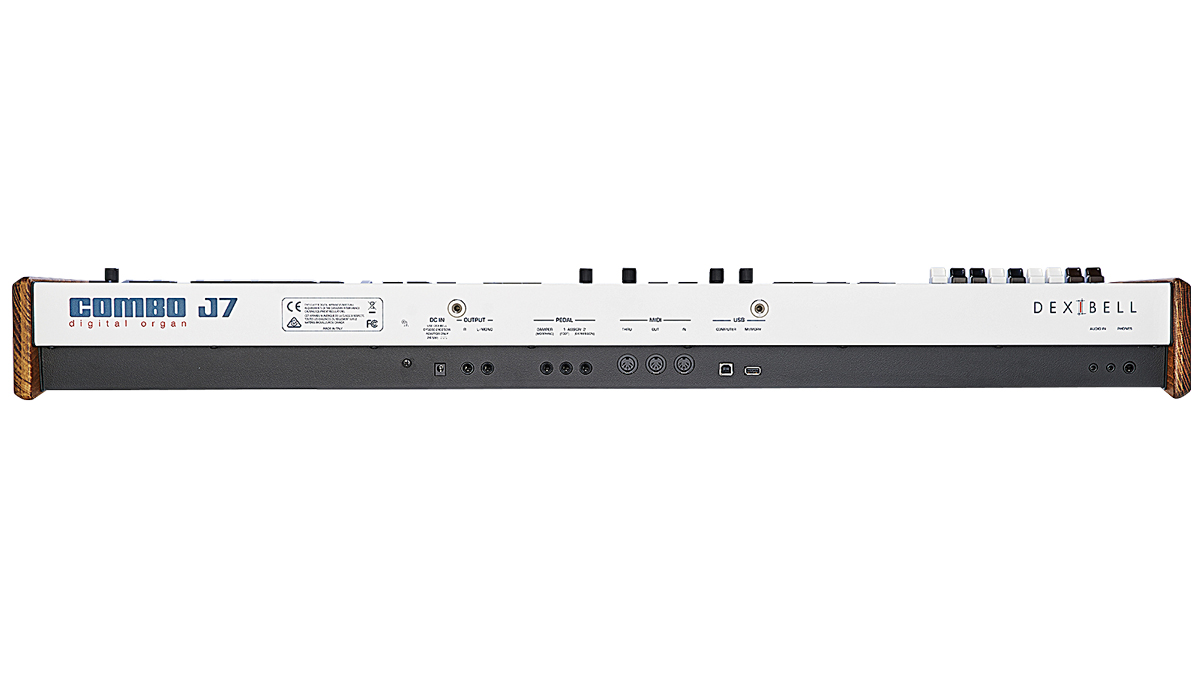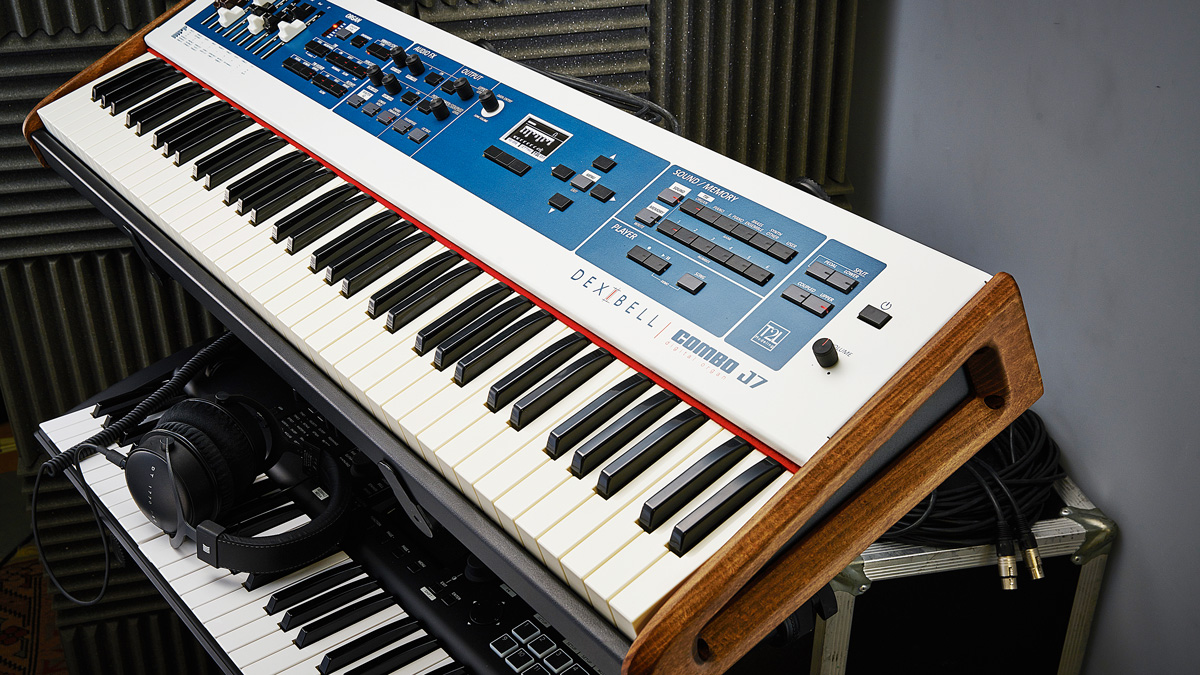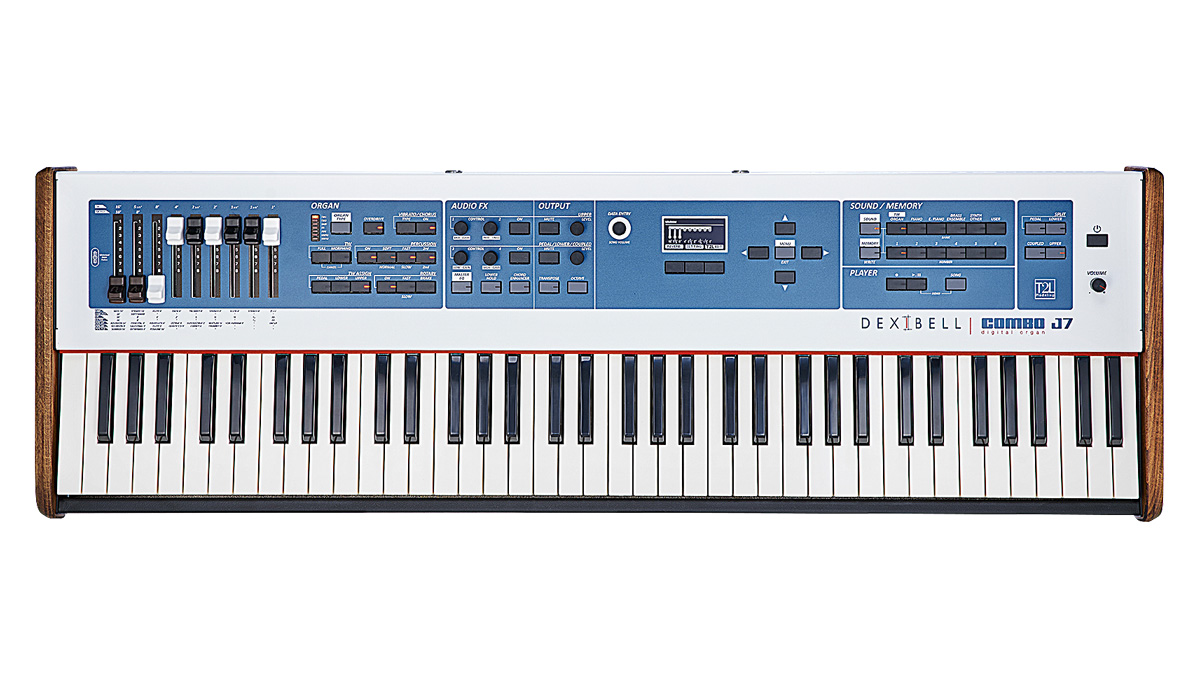MusicRadar Verdict
A solid all-rounder. It has decent tonewheel and acoustic piano emulations and the other bread and butter sounds are good too.
Pros
- +
Motorised drawbars are a great feature.
- +
Tonewheel organs pretty authentic, as are the rotary emulation/percussion.
- +
A good range of ‘bread and butter’ sounds are included.
Cons
- -
The interface can be confusing.
- -
Front panel not that classy.
MusicRadar's got your back
The dedicated ‘clonewheel’ organ market is already pretty crowded, but the combo market which includes Hammond’s SK1-73, Nord’s new Electro 6 and Stage 3, Roland’s VR-730 and Vox’s new Continental, is getting busier by the minute.
Recently, we were impressed by Dexibell’s Vivo S7 piano and so we were very happy to be able to review the Combo J7, which combines organ with other bread and butter sounds.
Build-wise, everything (knobs, switchgear etc) seems very sturdy and built to last and, like Nord’s offerings, the case is all tough painted metal. The J7 is also adorned with some great-looking sculpted wooden, walnut-stained ends, which make lifting the J7 easy.
Thankfully, it’s pretty lightweight too, weighing in at just 10kg/22lbs (the same as my Nord Stage 3 Compact). The keybed also feels almost identical to the Nord Stage 3 Compact - both use Fatar’s TP-80, 73-note waterfall keybed (though the J7 misses aftertouch).
Regardless, it’s eminently playable both for fast organ playing (it handles single note repeats/glisses very well) and for playing pianos and synths. We’re betting that most folks will be purchasing the J7 for its organ section, so that’s going to be my focus here.
As mentioned earlier, there are two tonewheel models onboard which use Dexibell’s T2L sampling and modelling system. The first is a B3-type organ routed through a tonewheel (Leslie) cabinet, while the second is a tonewheel organ routed through ‘built-in speakers’, (which we presume is more like a Hammond A100). Both models sound pretty authentic (T1 sounds fatter, while T2 sounds thinner) and you get four parts to play with (4-part multi-timbral), all addressable independently over MIDI.

This is great as it means you can easily set up a two manual (upper and lower) plus pedal part (as on a real B3).
Want all the hottest music and gear news, reviews, deals, features and more, direct to your inbox? Sign up here.
However! Be aware that there’s only one physical MIDI input on the J7, so you can’t have a MIDI pedalboard and an external second MIDI keyboard connected simultaneously - a second MIDI input would have allowed greater flexibility here for true 3-part playing (though admittedly, like the NS3, this isn’t a dedicated ‘clonewheel’ like the C2D or Viscount Legend). A MIDI splitter box might solve this. Note that you can also layer organ with any of the other tones onboard, which is handy!
In terms of sonics, T1 (Tonewheel 1) is our favourite model. It has a rich low end and a nicely cutting high end with slightly scooped mids, though the mids (and the highs and lows) can all be EQed separately to get the overall tone more in the B3 ballpark.
Next to our Nord Stage 3, the general Hammond tone doesn’t feel quite as authentic and ballsy but it’s solid all the same. The same can be said for the Chorus/Vibrato emulation - it’s solid but not quite deep or vibey enough next to my real B3 and Nord (but maybe this can be rmware- updated).
The J7’s motorised draw-faders are an absolute godsend! One of the problems with boards that don’t have this, is that you are reliant on the display to tell you where your saved physical drawbar settings are at. With the J7 you can save your settings and move to another sound and the drawbars will jump back to their saved position smoothly. You can also morph between two drawbar settings via expression pedal, or via the front panel.
Effects-wise, there’s plenty to work with (aside from the organ’s rotary, overdrive and chorus/vibrato effects). There are two effect blocks available per-part, with 24 reverb types and 14 insert effects (including some nice delays and phaser/ anger/chorus). There’s also Bluetooth which allows the streaming of audio wirelessly to the J7.
We do love the continuously variable key click (on/off), leakage and hum levels, (which really add to the authenticity). In addition, you can tweak the horn balances and ramp/static speeds for the rotary speaker and there’s also some super-authentic rotary noise that can be blended in to add some air and whirl to your sound!
The rotary generally sounds great and it has a brake mode too to stop the rotors completely. The stereo panorama could be a bit wider (and when flying at full speed, the Leslie can sound a little bit too wobbly or tremolo-ish) but once again it’s still very good and can be foot controlled too (along with expression).
The overdrive sounds good, and adds some welcome breakup and texture to the static sound, though it’s a shame there’s no dedicated overdrive dial. Finally, let’s not forget the included transistor and pipe organ emulations - these are also nicely authentic, and there are plenty of preset sounds and drawbar registrations to play with too.
In terms of the bread and butter sounds, you have 105 other tones which are lifted directly from the S7. These include acoustic/electric pianos, clavs, vibes, marimba, acoustic strings and many varied synth tones (including synth basses, leads, brass, super-saws and poly-pads).

To recap, these samples were all taken at 24-bit 48kHz, with up to 15 second samples for the lower notes. The pianos sound particularly solid and the sympathetic resonance, note-off noise and pedal noise really add to the authentic vibe. The electric pianos also sound good in a mix, though the attacks on the tine pianos are a bit soft/mushy (for soloing at least).
Regardless, they’re nicely dynamic with control available for the bell, growl and cabinet resonance elements - add some reverb, auto-panning and a little overdrive/phaser and you’re all set for making classic EP sounds.
This is a powerful, well-built piece of kit that generally sounds solid next to the competition. As Dexibell’s first foray into the combo organ market, it’s all the more impressive.
